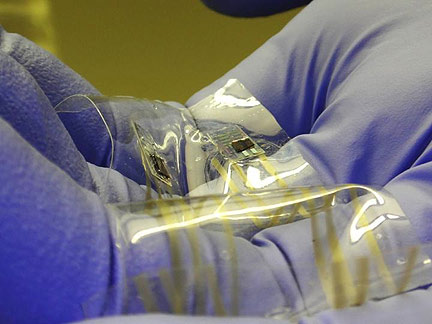Artificial Robotic Skin With a Sense of Touch
 Oct-23-15
Researchers have developed a flexible robotic skin made up of electronic mechanoreceptors that could give prosthetic hands a sense of touch.
Oct-23-15
Researchers have developed a flexible robotic skin made up of electronic mechanoreceptors that could give prosthetic hands a sense of touch.Created by a team at Stanford University, the plastic skin is based on our own sense of touch, which is made possible by mechanoreceptors in the skin that detect pressure and send the signals to the brain. The skin consists of multiple layers, including one that contains printed circuits and another lined with a network of tiny pyramids filled with electrically-conductive carbon nanotubes, which functions as the pressure sensor. Pressure applied to the skin will cause the pyramids to compress, increasing their conductivity and causing the circuit layer to transmit electrical pulses based on the amount of pressure.
The next step would be to ensure the signals are read properly by the brain, which would probably be accomplish via optogenitics—already being tested in mice.

More Info about this Invention:
[GIZMAG.COM][AAAS.ORG]

Add Your Comment